3D Intelligent back features elastomer strands that provide tension where support is needed, and ease of movement where you need to be more flexible.
Design Details
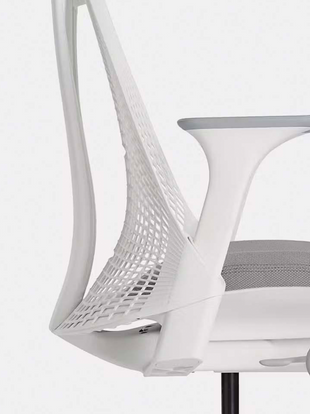
01
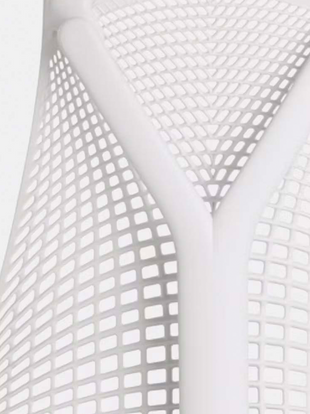
02
Ventilated back keeps you cool with exceptional airflow.
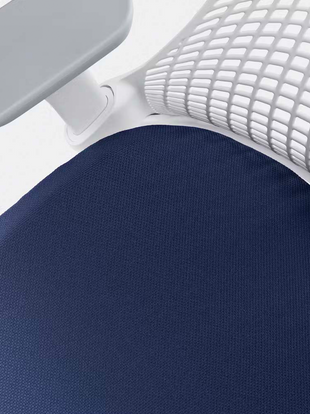
03
Contoured seat pad made of supportive injection-molded foam provides lasting comfort.
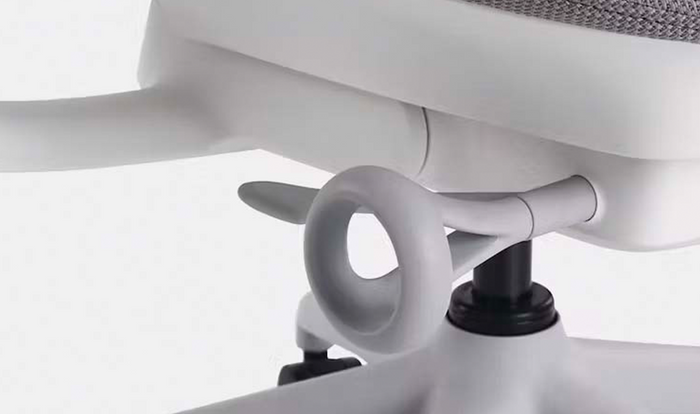
04
Harmonic Tilt technology offers balanced support for your body while you move.

05
Composed of recycled materials, Sayl helps divert plastic waste from the ocean.
Inspirations
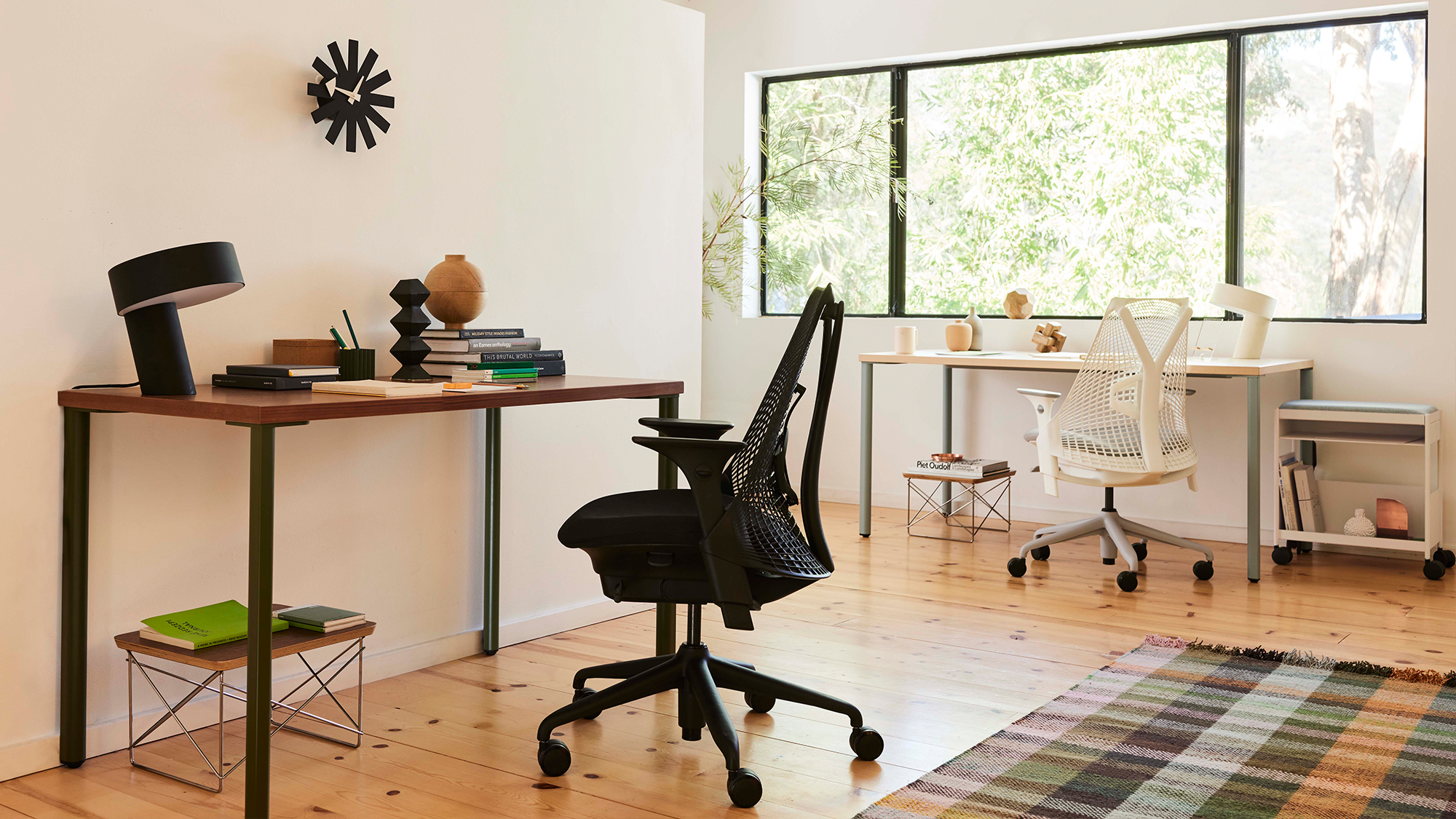
Room 1
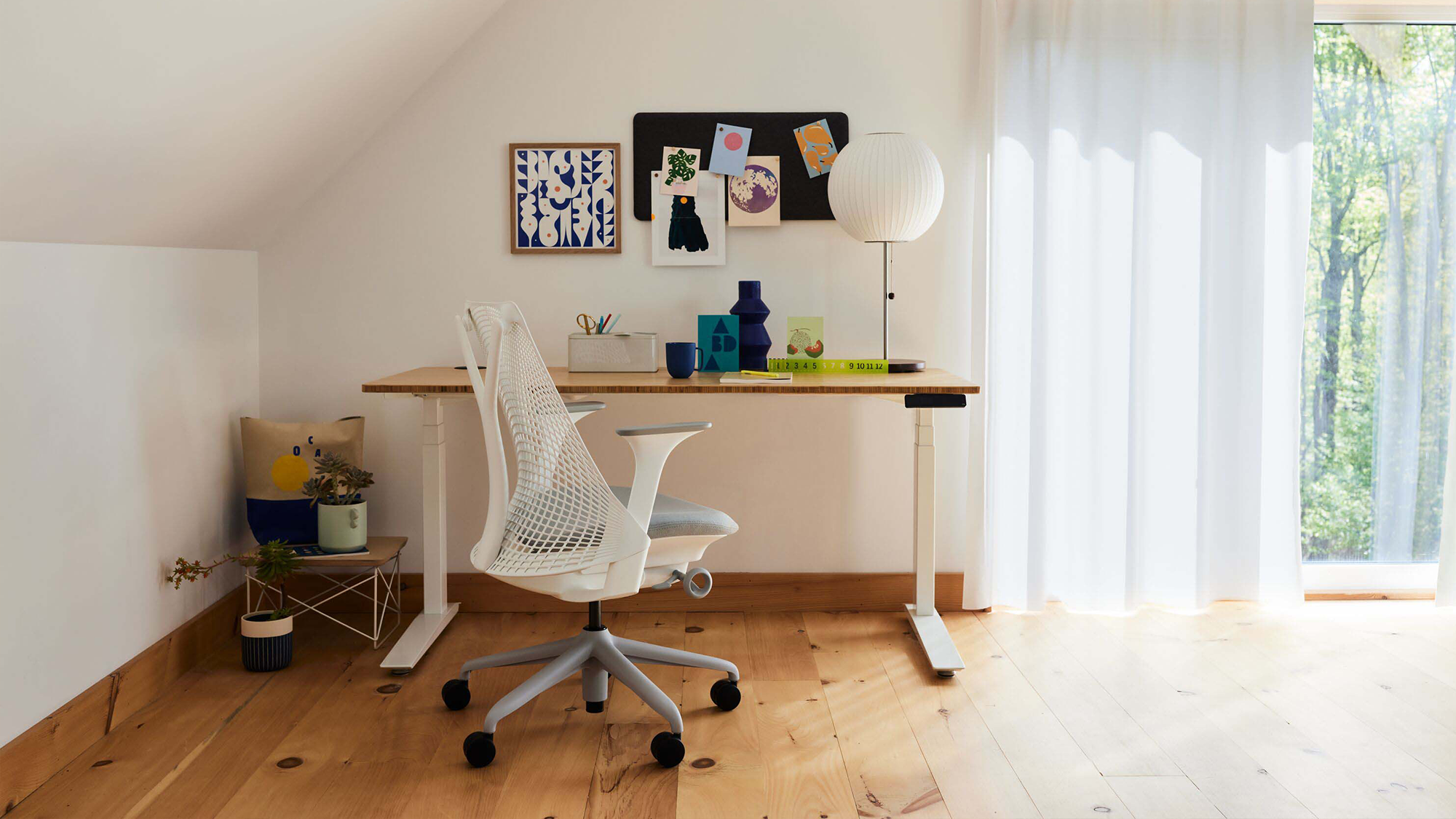
Room 2
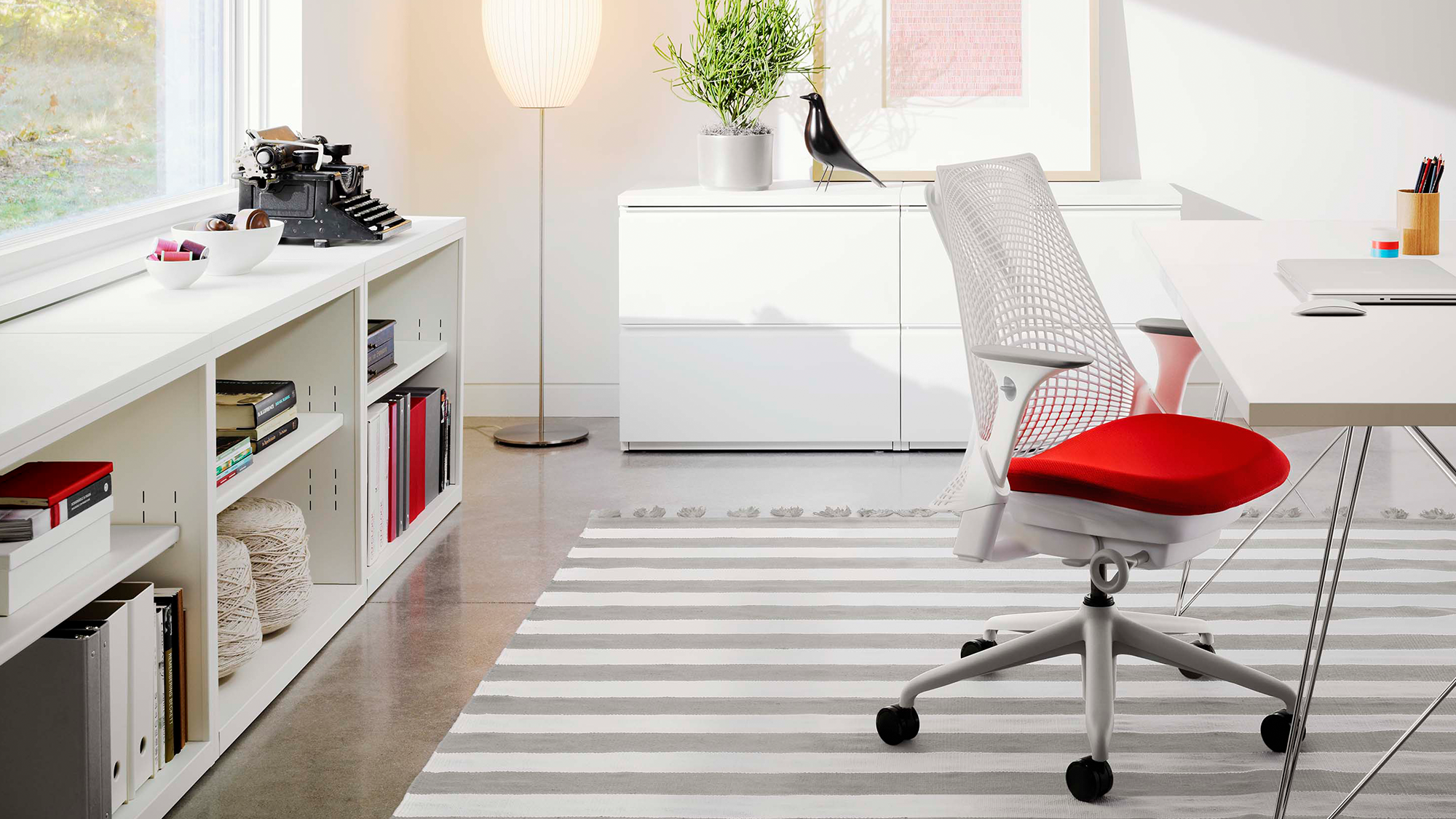
Room 3
Learn How to Adjust
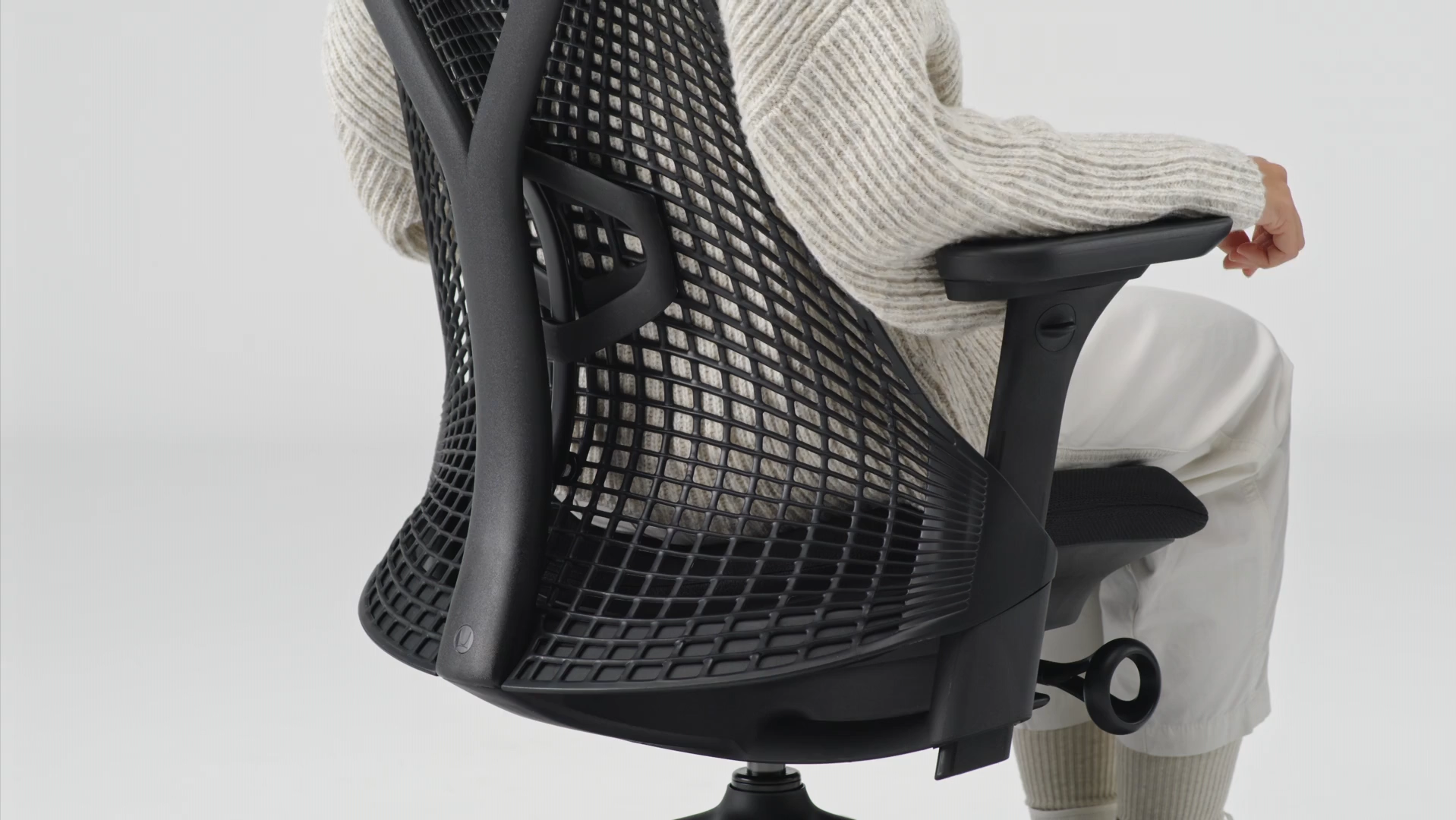
Tilt Tension
Reach beneath the chair and grab the knob with a long stem on the right side. To increase the tension, sit in the chair and turn the knob forward. To decrease the tension, turn the knob backward.
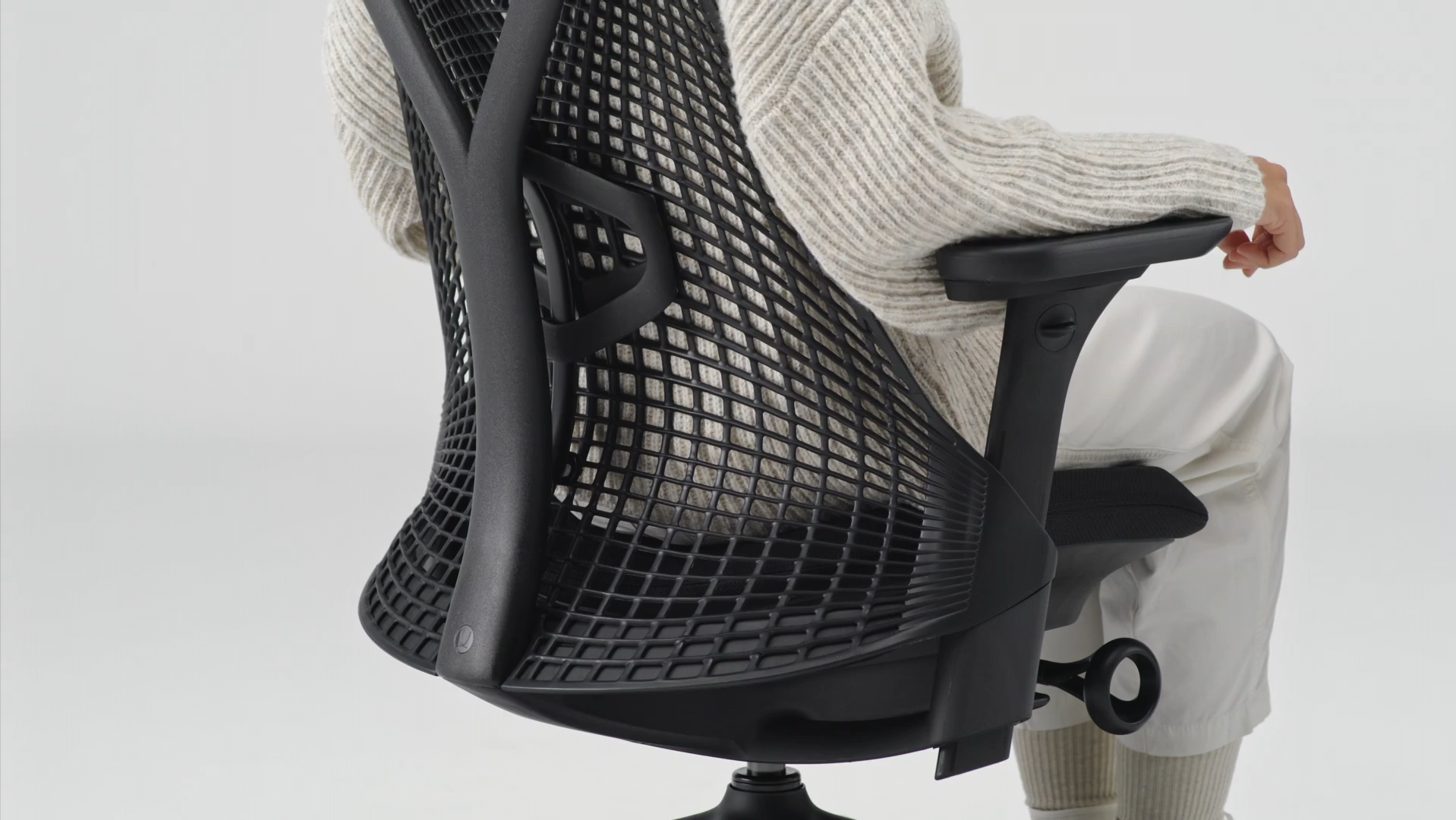
Tilt Limiter
Engage the tilt limiter when you want to sit in an upright or partially
reclined position. To engage, recline and move tab up to define
the limit of recline. To release, lean forward and flip tab fully downward.
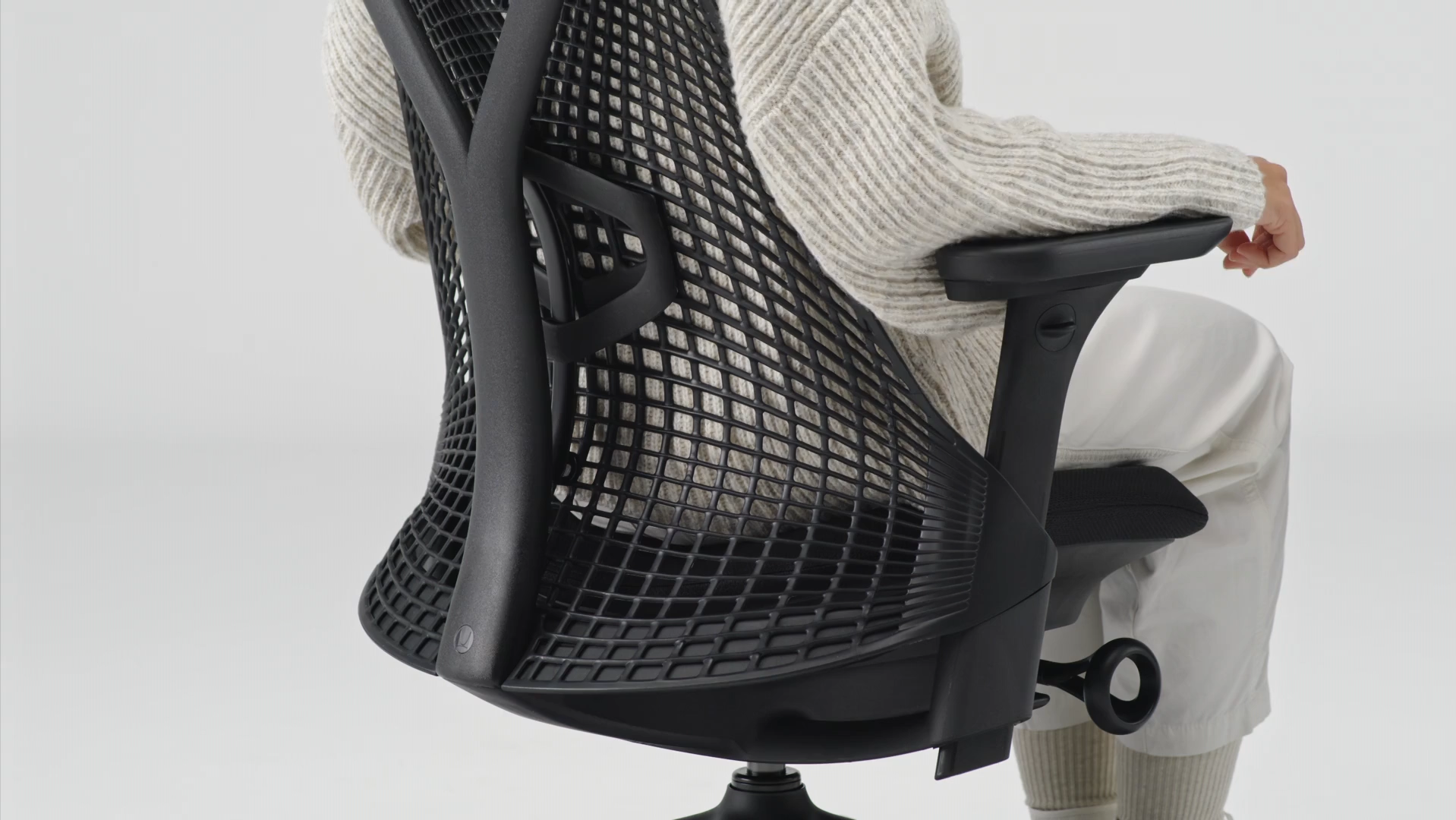
Forward Tilt
Engage forward tilt to support the thighs’ declined posture when
performing intensive tasks such as keyboarding. To position chair forward, recline and flip lever down. To resume horizontal position, recline and flip lever up.
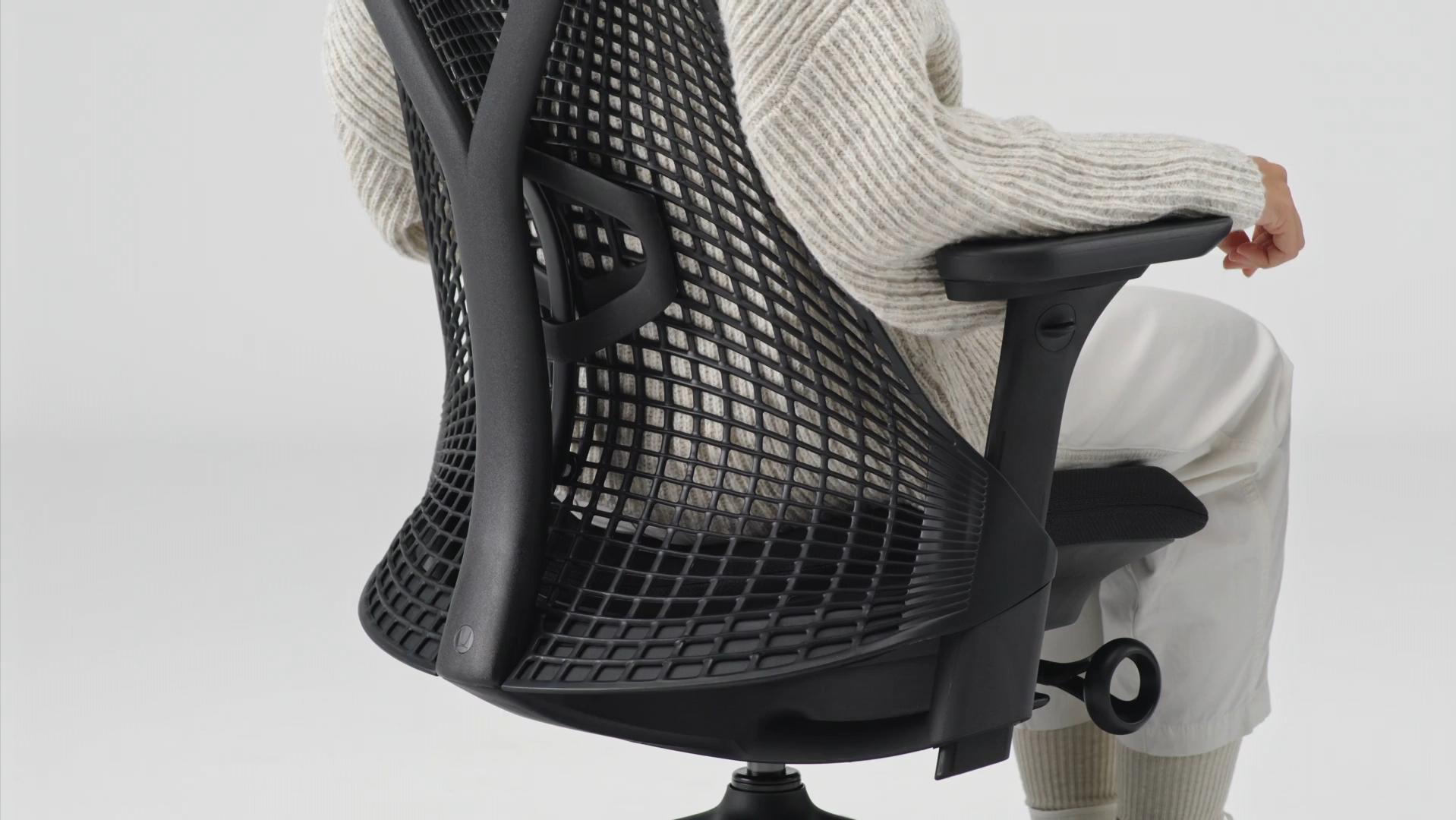
Arm Adjustments
Pull the arms up when you want support; place them at their lowest setting when you'd rather they slide under your desk; pull them in when you want a cushion; or move them to the side if they're in the way.
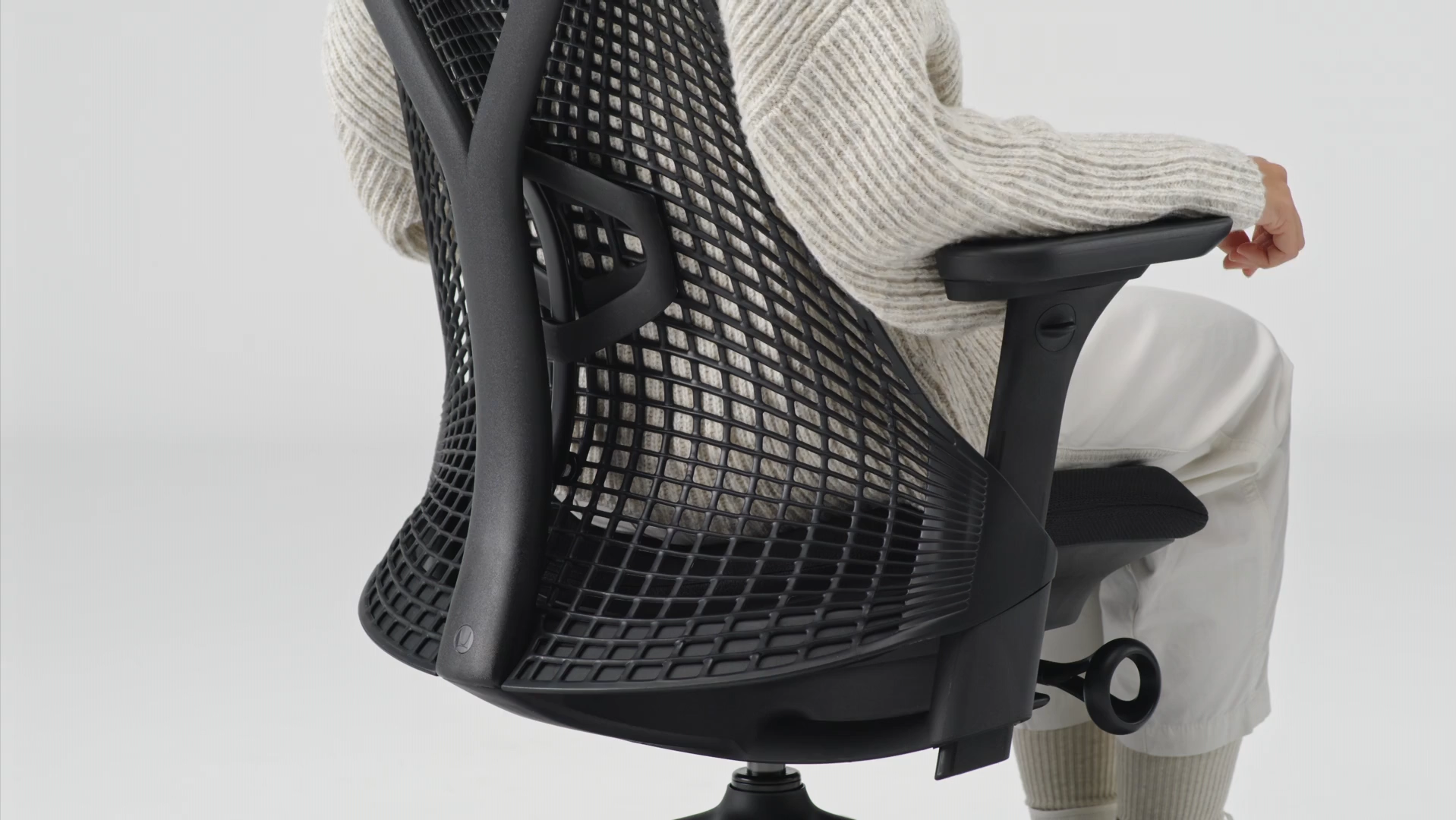
Seat Height
Move the seat up or down until your feet are flat on the floor, giving you an anchor point.
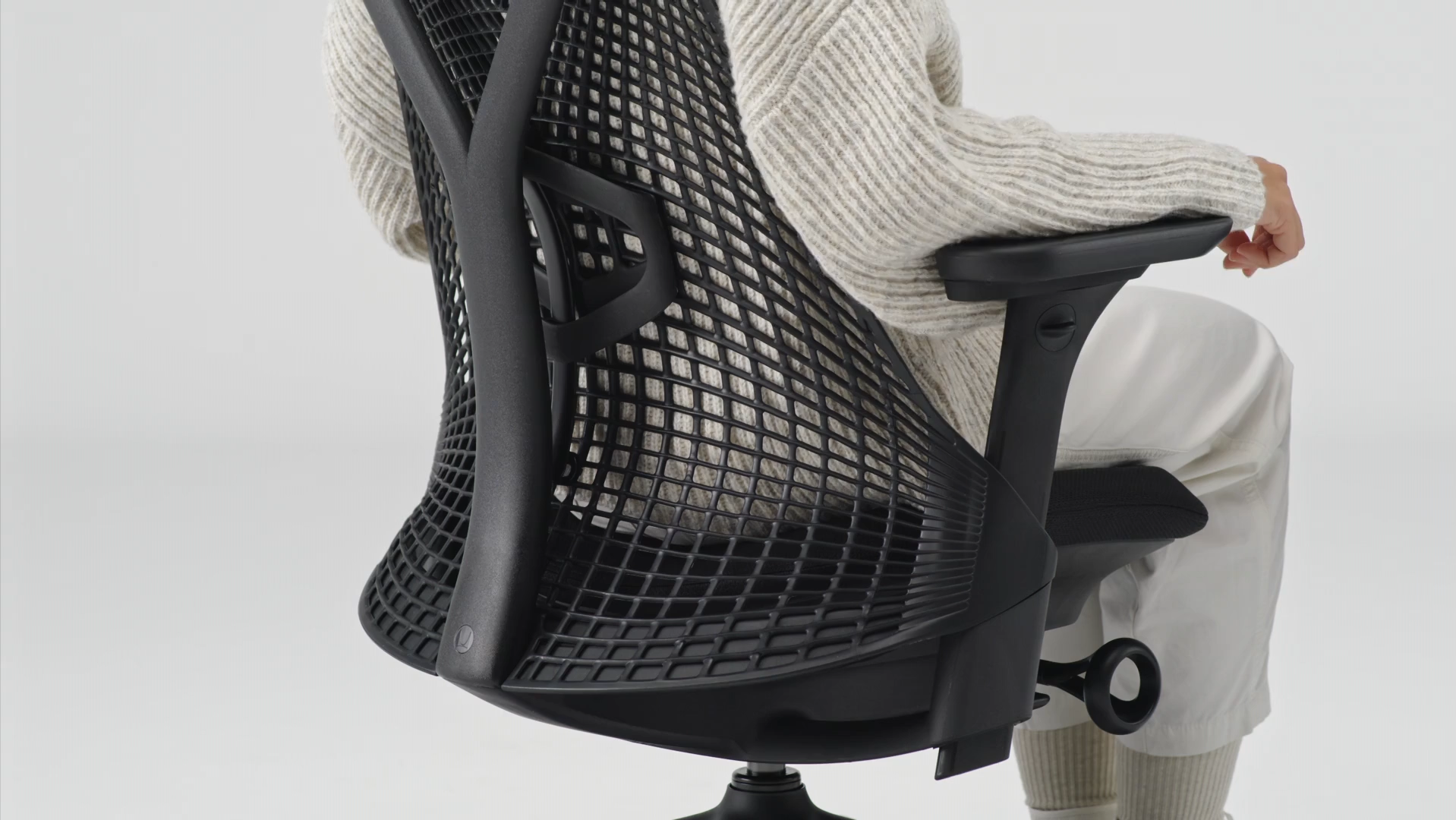
Seat Depth
To alleviate pressure from your legs and allow the seat to work in harmony with the backrest, slide the seat forward or backward.
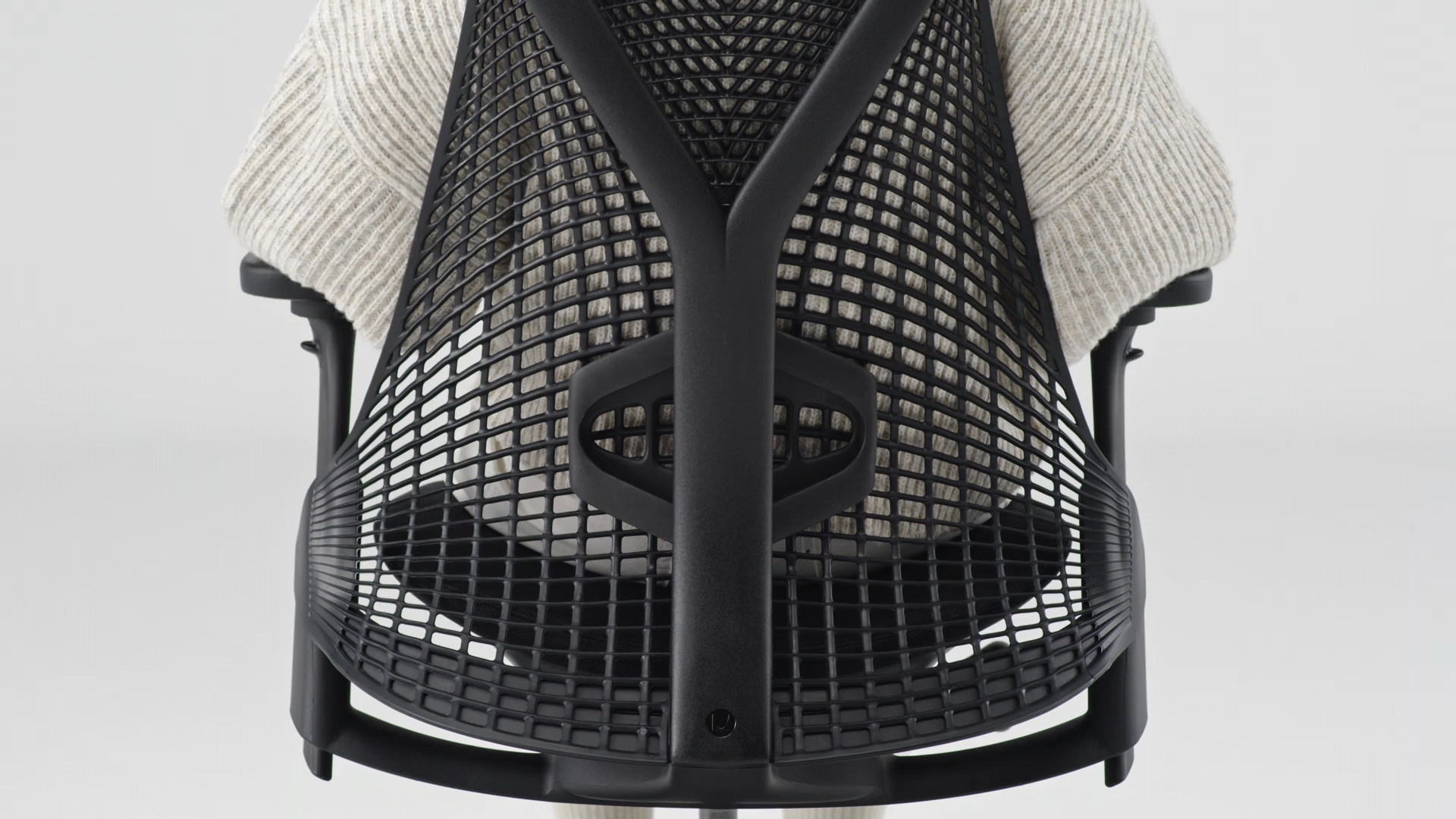
Lumber Height
Adjust the lumbar height so that it comfortably supports the natural curve of your spine.
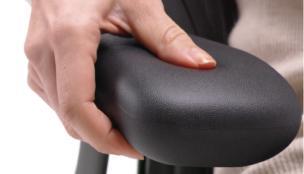
Adjusting Sayl
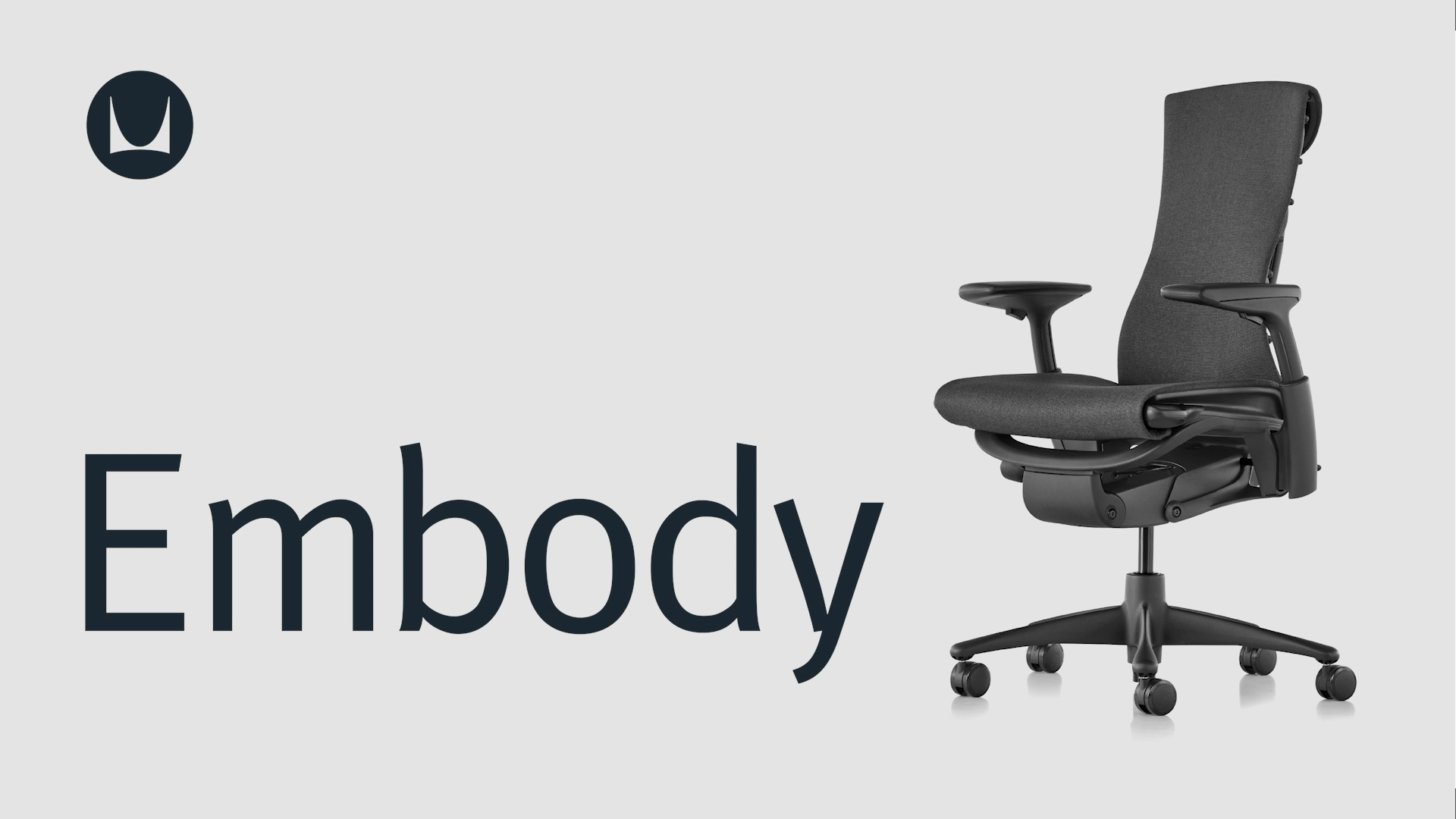
Smart Engineering
Sayl’s unframed 3D Intelligent back features elastomer strands that are stretched to provide the greatest tension at points where support is needed and the least in areas that allow for the most expansive range of motion.
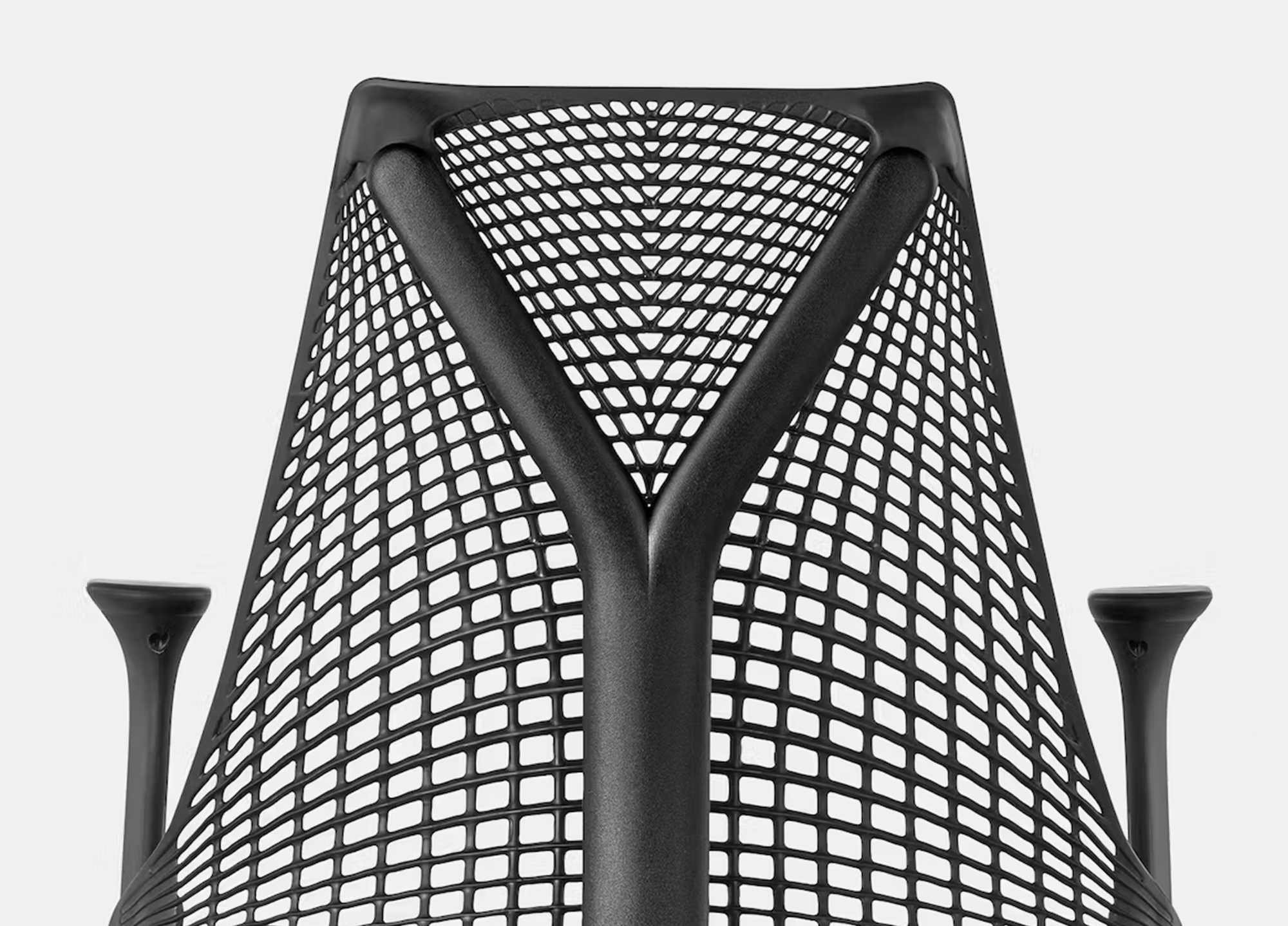
You May Also Like
HK$75,176.00
HK$56,382.00
HK$14,675.00
HK$11,006.00
From
HK$4,908.00
HK$4,163.00
From
HK$5,469.00
HK$4,101.00
From
HK$5,469.00
HK$4,101.00
From
HK$18,744.00
HK$14,508.00
-
 ⸤swatches 5⸥ sync & dark mineral
⸤swatches 5⸥ sync & dark mineral
-
 ⸤swatches 23⸥ balance & black
⸤swatches 23⸥ balance & black
-
 ⸤swatches 19⸥ medley & blue grotto
⸤swatches 19⸥ medley & blue grotto
-
 ⸤swatches 3⸥ sync & canyon
⸤swatches 3⸥ sync & canyon
-
 ⸤swatches 7⸥ sync & nightfall
⸤swatches 7⸥ sync & nightfall
-
 ⸤swatches 15⸥ sync & dark carbon
⸤swatches 15⸥ sync & dark carbon
-
 ⸤swatches 1⸥ sync & black
⸤swatches 1⸥ sync & black
-
 ⸤swatches 9⸥ sync & slate grey
⸤swatches 9⸥ sync & slate grey
-
 ⸤swatches 11⸥ sync & truffle
⸤swatches 11⸥ sync & truffle
-
 ⸤swatches 14⸥ sync & wild berry
⸤swatches 14⸥ sync & wild berry
-
 ⸤swatches 17⸥ rhythm & berry blue
⸤swatches 17⸥ rhythm & berry blue
-
 ⸤swatches 21⸥ medley & acai berry
⸤swatches 21⸥ medley & acai berry
- + More Options
From
HK$14,675.00
HK$12,612.00
From
HK$16,883.00
HK$12,662.00
From
HK$4,743.00
HK$4,266.00
From
HK$75,176.00
HK$56,382.00
-
 ⸤swatches 1⸥ leather & black
⸤swatches 1⸥ leather & black
-
 ⸤swatches 3⸥ prone leather & vine
⸤swatches 3⸥ prone leather & vine
-
 ⸤swatches 4⸥ prone leather & sail
⸤swatches 4⸥ prone leather & sail
-
 ⸤swatches 5⸥ prone leather & ledge
⸤swatches 5⸥ prone leather & ledge
-
 ⸤swatches 6⸥ prone leather & mantra
⸤swatches 6⸥ prone leather & mantra
-
 ⸤swatches 7⸥ prone leather & java
⸤swatches 7⸥ prone leather & java
-
 ⸤swatches 8⸥ checker & ultramarine/turquoise
⸤swatches 8⸥ checker & ultramarine/turquoise
-
 ⸤swatches 2⸥ leather & ivory
⸤swatches 2⸥ leather & ivory
-
 ⸤swatches 9⸥ checker & magenta/orange
⸤swatches 9⸥ checker & magenta/orange
-
 ⸤swatches 10⸥ checker & black/white
⸤swatches 10⸥ checker & black/white
-
 ⸤swatches 11⸥ checker & emerald light/ivory
⸤swatches 11⸥ checker & emerald light/ivory
-
 ⸤swatches 12⸥ checker & olive/pink
⸤swatches 12⸥ checker & olive/pink
- + More Options
From
HK$9,079.00
HK$7,248.00
-
 ⸤swatches 5⸥ white & berry blue
⸤swatches 5⸥ white & berry blue
-
 ⸤swatches 1⸥ white & graphite
⸤swatches 1⸥ white & graphite
-
 ⸤swatches 2⸥ white & mango
⸤swatches 2⸥ white & mango
-
 ⸤swatches 3⸥ white & rattan
⸤swatches 3⸥ white & rattan
-
 ⸤swatches 4⸥ white & alpine white
⸤swatches 4⸥ white & alpine white
-
 ⸤swatches 6⸥ white & chartreuse
⸤swatches 6⸥ white & chartreuse
-
 ⸤swatches 7⸥ graphite & graphite
⸤swatches 7⸥ graphite & graphite
-
 ⸤swatches 8⸥ graphite & mango
⸤swatches 8⸥ graphite & mango
-
 ⸤swatches 9⸥ graphite & rattan
⸤swatches 9⸥ graphite & rattan
-
 ⸤swatches 10⸥ graphite & alpine white
⸤swatches 10⸥ graphite & alpine white
-
 ⸤swatches 11⸥ graphite & berry blue
⸤swatches 11⸥ graphite & berry blue
-
 ⸤swatches 12⸥ graphite & chartreuse
⸤swatches 12⸥ graphite & chartreuse
- + More Options
From
HK$4,491.00
HK$4,077.00
From
HK$7,465.00
HK$5,598.00
From
HK$15,719.00
HK$11,789.00
-
 ⸤swatches 1⸥ graphite & graphite
⸤swatches 1⸥ graphite & graphite
-
 ⸤swatches 11⸥ studio white & dark turquoise
⸤swatches 11⸥ studio white & dark turquoise
-
 ⸤swatches 21⸥ studio white & cappuccino
⸤swatches 21⸥ studio white & cappuccino
-
 ⸤swatches 17⸥ studio white & lime green
⸤swatches 17⸥ studio white & lime green
-
 ⸤swatches 15⸥ studio white & alpine
⸤swatches 15⸥ studio white & alpine
-
 ⸤swatches 9⸥ studio white & twilight
⸤swatches 9⸥ studio white & twilight
-
 ⸤swatches 19⸥ studio white & slate grey
⸤swatches 19⸥ studio white & slate grey
-
 ⸤swatches 3⸥ graphite & twilight
⸤swatches 3⸥ graphite & twilight
-
 ⸤swatches 5⸥ graphite & dark turquoise
⸤swatches 5⸥ graphite & dark turquoise
-
 ⸤swatches 7⸥ graphite & urban orange
⸤swatches 7⸥ graphite & urban orange
- + More Options
HK$17,739.00
HK$13,304.00
From
HK$19,143.00
HK$14,684.00
HK$7,929.00
HK$5,946.00
HK$7,929.00
HK$5,946.00
HK$7,929.00
HK$5,946.00
HK$7,929.00
HK$5,946.00
HK$7,929.00
HK$5,946.00
HK$7,929.00
HK$5,946.00
HK$7,929.00
HK$5,946.00
HK$3,902.00
HK$2,926.00
From
HK$12,557.00
HK$9,417.00
From
HK$11,037.00
HK$8,535.00
From
HK$130,644.00
HK$97,983.00
From
HK$117,417.00
HK$88,062.00
From
HK$39,235.00
-
 ⸤swatches 1⸥ prone leather & lotus
⸤swatches 1⸥ prone leather & lotus
-
 ⸤swatches 3⸥ prone leather & script
⸤swatches 3⸥ prone leather & script
-
 ⸤swatches 4⸥ prone leather & obsidian
⸤swatches 4⸥ prone leather & obsidian
-
 ⸤swatches 5⸥ prone leather & sail
⸤swatches 5⸥ prone leather & sail
-
 ⸤swatches 6⸥ prone leather & vine
⸤swatches 6⸥ prone leather & vine
-
 ⸤swatches 7⸥ prone leather & yarrow
⸤swatches 7⸥ prone leather & yarrow
-
 ⸤swatches 8⸥ prone leather & balsa
⸤swatches 8⸥ prone leather & balsa
-
 ⸤swatches 9⸥ prone leather & bricolage
⸤swatches 9⸥ prone leather & bricolage
-
 ⸤swatches 10⸥ prone leather & ledge
⸤swatches 10⸥ prone leather & ledge
-
 ⸤swatches 11⸥ prone leather & java
⸤swatches 11⸥ prone leather & java
-
 ⸤swatches 32⸥ beck & clayware
⸤swatches 32⸥ beck & clayware
-
 ⸤swatches 33⸥ beck & foundry
⸤swatches 33⸥ beck & foundry
-
 ⸤swatches 28⸥ beck & inkpad
⸤swatches 28⸥ beck & inkpad
-
 ⸤swatches 31⸥ beck & retrospect
⸤swatches 31⸥ beck & retrospect
-
 ⸤swatches 30⸥ beck & woodlet
⸤swatches 30⸥ beck & woodlet
-
 ⸤swatches 25⸥ luce & agrarian
⸤swatches 25⸥ luce & agrarian
-
 ⸤swatches 24⸥ luce & alkali
⸤swatches 24⸥ luce & alkali
-
 ⸤swatches 22⸥ luce & blanched
⸤swatches 22⸥ luce & blanched
-
 ⸤swatches 26⸥ luce & coulis
⸤swatches 26⸥ luce & coulis
-
 ⸤swatches 23⸥ luce & scoria
⸤swatches 23⸥ luce & scoria
-
 ⸤swatches 19⸥ mohair supreme & armory
⸤swatches 19⸥ mohair supreme & armory
-
 ⸤swatches 21⸥ mohair supreme & brandy
⸤swatches 21⸥ mohair supreme & brandy
-
 ⸤swatches 20⸥ mohair supreme & capiz
⸤swatches 20⸥ mohair supreme & capiz
-
 ⸤swatches 35⸥ raise leather & black
⸤swatches 35⸥ raise leather & black
-
 ⸤swatches 39⸥ raise leather & bruno
⸤swatches 39⸥ raise leather & bruno
-
 ⸤swatches 38⸥ raise leather & canyon
⸤swatches 38⸥ raise leather & canyon
-
 ⸤swatches 40⸥ raise leather & creme
⸤swatches 40⸥ raise leather & creme
-
 ⸤swatches 36⸥ raise leather & dovetail
⸤swatches 36⸥ raise leather & dovetail
-
 ⸤swatches 37⸥ raise leather & grey
⸤swatches 37⸥ raise leather & grey
-
 ⸤swatches 43⸥ raise leather & maize
⸤swatches 43⸥ raise leather & maize
-
 ⸤swatches 41⸥ raise leather & oasis
⸤swatches 41⸥ raise leather & oasis
-
 ⸤swatches 44⸥ raise leather & sienna
⸤swatches 44⸥ raise leather & sienna
-
 ⸤swatches 42⸥ raise leather & verde
⸤swatches 42⸥ raise leather & verde
-
 ⸤swatches 48⸥ whim & fir
⸤swatches 48⸥ whim & fir
-
 ⸤swatches 46⸥ whim & mustard seed
⸤swatches 46⸥ whim & mustard seed
-
 ⸤swatches 49⸥ whim & navy
⸤swatches 49⸥ whim & navy
-
 ⸤swatches 50⸥ whim & pewter
⸤swatches 50⸥ whim & pewter
-
 ⸤swatches 47⸥ whim & terra cotta
⸤swatches 47⸥ whim & terra cotta
-
 ⸤swatches 45⸥ whim & white
⸤swatches 45⸥ whim & white
-
 ⸤swatches 27⸥ beck & molecule
⸤swatches 27⸥ beck & molecule
-
 ⸤swatches 29⸥ beck & appalachain
⸤swatches 29⸥ beck & appalachain
-
 ⸤swatches 34⸥ beck & patisserie
⸤swatches 34⸥ beck & patisserie
-
 ⸤swatches 12⸥ mode & talus
⸤swatches 12⸥ mode & talus
-
 ⸤swatches 13⸥ mode & sycamore
⸤swatches 13⸥ mode & sycamore
-
 ⸤swatches 14⸥ mode & goldenrod
⸤swatches 14⸥ mode & goldenrod
-
 ⸤swatches 15⸥ mode & rust
⸤swatches 15⸥ mode & rust
-
 ⸤swatches 16⸥ mode & alder
⸤swatches 16⸥ mode & alder
-
 ⸤swatches 17⸥ mode & denim
⸤swatches 17⸥ mode & denim
-
 ⸤swatches 18⸥ mode & celtic
⸤swatches 18⸥ mode & celtic
-
 ⸤swatches 2⸥ prone leather & essense
⸤swatches 2⸥ prone leather & essense
- + More Options
From
HK$19,500.00
HK$16,524.00
-
 ⸤swatches 1⸥ beck & appalachian
⸤swatches 1⸥ beck & appalachian
-
 ⸤swatches 2⸥ beck & brushstroke
⸤swatches 2⸥ beck & brushstroke
-
 ⸤swatches 3⸥ beck & buckram
⸤swatches 3⸥ beck & buckram
-
 ⸤swatches 4⸥ beck & cornerstone
⸤swatches 4⸥ beck & cornerstone
-
 ⸤swatches 5⸥ beck & katydid
⸤swatches 5⸥ beck & katydid
-
 ⸤swatches 6⸥ beck & lambic
⸤swatches 6⸥ beck & lambic
-
 ⸤swatches 7⸥ beck & letterpress
⸤swatches 7⸥ beck & letterpress
-
 ⸤swatches 8⸥ beck & lingonberry
⸤swatches 8⸥ beck & lingonberry
-
 ⸤swatches 9⸥ beck & menthol
⸤swatches 9⸥ beck & menthol
-
 ⸤swatches 10⸥ beck & molecule
⸤swatches 10⸥ beck & molecule
-
 ⸤swatches 11⸥ beck & patisserie
⸤swatches 11⸥ beck & patisserie
-
 ⸤swatches 12⸥ nico & alcazar
⸤swatches 12⸥ nico & alcazar
-
 ⸤swatches 13⸥ nico & bridegroom
⸤swatches 13⸥ nico & bridegroom
-
 ⸤swatches 14⸥ nico & cheerful
⸤swatches 14⸥ nico & cheerful
-
 ⸤swatches 15⸥ nico & dressage
⸤swatches 15⸥ nico & dressage
-
 ⸤swatches 17⸥ nico & meditation
⸤swatches 17⸥ nico & meditation
-
 ⸤swatches 19⸥ nico & toasty
⸤swatches 19⸥ nico & toasty
-
 ⸤swatches 20⸥ nico & zing
⸤swatches 20⸥ nico & zing
- + More Options
From
HK$8,106.00
HK$6,648.00
HK$5,688.00
HK$4,266.00
HK$19,647.00
HK$14,735.00
HK$9,079.00
HK$6,809.00
From
HK$19,579.00
HK$14,684.00










































![[Quick Ship] Aeron Office Chair B Size-Fully Adj.*Mineral](http://www.hermanmiller.hk/cdn/shop/files/aeron_gal_mineral_mineral_01_aeb2cd85-d317-40d7-b125-0b47a5b59b43.jpg?height=1180&v=1706759006&width=400)
![[Quick Ship] Aeron Office Chair B Size-Fully Adj.*Mineral](http://www.hermanmiller.hk/cdn/shop/files/aeron_gal_mineral_mineral_02_04896ad4-da40-4b5e-b9fc-ec20f80982f5.jpg?height=1180&v=1706759006&width=400)

















































